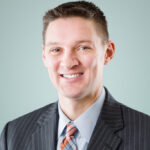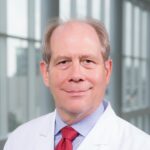Moreover, the university’s pediatric division now has its own fellowship program and benefits from two emeritus pediatric rheumatologists who teach the fellows one day a week. They also contribute to an overall feeling of community within the pediatric rheumatology division that recruits find appealing, Dr. Ruth said. “We have these emeritus-status professors who are still part of our group, plus we are enmeshed in our adult rheumatology program, and we have lots of conferences that we share, division rounds, even social events and gatherings, so it really feels like a bigger group.”
Outline Career Paths
In the Midwest, Steven Craig, MD, is one of 13 rheumatologists at the Iowa Arthritis and Osteoporosis Center (IAOC), Urbandale, which he describes as “one of the larger rheumatology-only, single-specialty, single-building groups.” He also serves as IAOC’s vice president.

Dr. Craig
The practice has struggled with recruitment in the past, particularly because there are no nearby fellowship programs, Dr. Craig said. But the Des Moines metropolitan area, where IAOC is located, does have internal medicine residency programs with clinical rotations. After learning the rotating residents were third-years who had already decided on their career paths, Dr. Craig worked on convincing the program administrators to send second-year residents instead. The approach worked to interest more residents in rheumatology. “Sure enough, we’ve actually placed a couple of rheumatology fellows, and I am excited to report that starting this summer, after graduation, one of the residents who came through earlier in his career is actually going to join our group,” he said.
Like Dr. Soloman, Dr. Craig has also seen the effectiveness of word-of-mouth recruitment as new hires talk with colleagues at meetings or on social media. Once that door is opened, the IAOC can extol its advantages, such as its very clear path to progress from associate to partner. “That’s very much appreciated from these folks,” Dr. Craig said. “If they’re going to make a commitment to move to the Midwest, they want to make certain that the long-term picture is laid out for them and what’s available to them. And that’s what we try to do.”
Draw from Fellows

Dr. Karp
As a medium-sized rheumatology division in Dallas, the University of Texas Southwestern Medical Center (UTSW) Division of Rheumatic Diseases has 25 faculty members who provide in-patient services to the university hospital and a county hospital, with about 900 beds each, as well as office rheumatology care at several other locations and the Dallas VA, according to David Karp, MD, PhD, chief of the division. Despite the heavy workload—“four to six weeks of in-patient consults annually and seeing patients at the hospitals for 14 days at a stretch”—he said he hasn’t had trouble enticing new clinical faculty.



